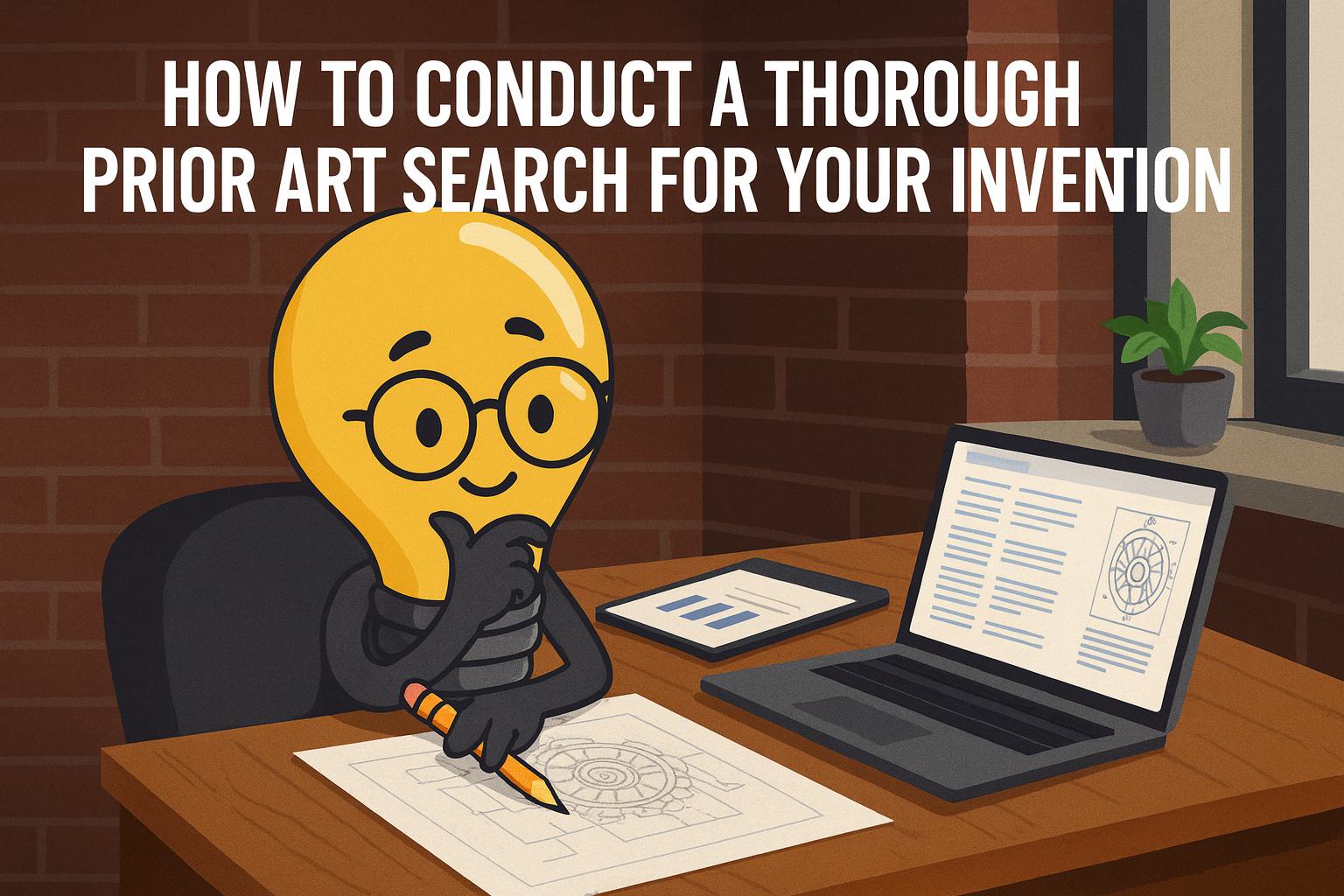How to Conduct a Thorough Prior Art Search for Your Invention

Before spending thousands of dollars and countless hours developing an invention, you need to answer two critical questions: What already exists? and Is there room for you to succeed?
A prior art search examines anything that shows your invention—or something similar—already exists: patents, published applications, commercial products, academic papers, ads, and even videos. While patentability is one outcome, the real goal for most inventors is to understand the market: what solutions exist, how your idea compares, and whether a genuine opportunity remains.
Step 1: Start with Perplexity.ai
General AI assistants—like ChatGPT, Claude, and Gemini—are excellent for writing and brainstorming. But unless they have search enabled, they rely primarily on training data and typically don’t provide verifiable citations. They’re not ideal for research that requires documented sources.
Perplexity is different. It searches the live internet, including patents, papers, product databases; provides citations you can click and verify; summarizes information clearly.
Dedicated patent-search platforms—such as Lens.org and other professional services—dig even deeper into structured patent data. Perpelexity also offers a patent-oriented search tool.
Use consumer AI tools for broad reconnaissance, then switch to specialized tools for deeper, patent-specific investigation.
Step 2: Search Patent Databases
Once you’ve identified the right terminology, move to official patent databases.
Google Patents: Start broad, then narrow using keywords and Boolean operators. Use Advanced Search to target titles, abstracts, claims, inventors, or class codes. Skim drawings—they often reveal similarities faster than text
Espacenet: Use Smart Search for natural-language queries. Advanced Search lets you combine terms, choose fields, and limit by date or region. Explore IPC/CPC classification codes to uncover related inventions. Use automatic translations for foreign patents. Search from multiple angles: technical terms, consumer terms, functional descriptions, and problem-based queries.
Step 3: Analyze Citations
Citations help you understand how ideas evolve.
Backward citations: earlier references the examiner considered relevant
Forward citations: newer patents that reference the one you’re viewing
Studying both gives you a “family tree” of related inventions and a deeper understanding of the competitive landscape. Google Patents and Espacenet make this easy.
Step 4: Search Existing Products
Products count as prior art whether patented or not.
Alibaba - Shows what manufacturers are producing globally, including items not yet sold in the U.S.
Amazon - Reveals consumer-facing solutions, pricing, reviews, first-available dates, and variations in approach. Read product reviews of competitive/alternative products to understand where your invention may have a competitive advantage.
Document relevant listings and dates. Take screenshots—you may need them later.
- Understand Combinations and Obviousness. Your invention does not need to exist exactly to be unpatentable. If it’s simply a predictable combination of known elements, the examiner may deem it “obvious.” A combination becomes non-obvious when it:
Works in an unexpected way
Solves a long-standing problem
Produces results someone skilled in the field would not anticipate
Understanding obviousness is just as important as finding direct matches.
When You Find “No Prior Art”
Finding nothing usually means one of the following:
Your search terms are too literal
Your scope is too narrow
A similar solution exists in another industry
You're overlooking alternative technologies that solve the same problem
Search the problem, not just your preferred solution. Look across industries and adjacent product categories.
Different People Find Different Prior Art
A crucial point: different people often find different prior art, even for the same invention. Variations in terminology, assumptions, search style, and experience lead to different results - this can be critical.
A Second Perspective Matters.
Invention City’s Brutally Honest Review (starting at $185) approaches prior art with an initial look from an investor’s perspective - evaluating whether we would risk our own money on the invention. This viewpoint often uncovers competitive threats and overlooked references that traditional patent-focused searches miss. We can also take a deeper dive and give strategic analysis from our unique perspective.
You Don’t Need a Patent to Sell a Product
Patents are not required to manufacture or sell; they simply give you the right to exclude others. A patent may make sense if your invention has strong novelty or you need investor credibility. But you might skip one when your advantage lies in execution, speed to market, branding, or design—rather than a highly unique mechanism.
A Practical Prior Art Workflow
PHASE 1: Initial Discovery
Use Perplexity to explore terminology, competitors, and related technologies.
PHASE 2: Patent Search
Search Google Patents and Espacenet; review 10–20 relevant references.
PHASE 3: Citation Analysis
Analyze forward and backward citations of the top 3–5 patents.
PHASE 4: Product Search
Search Alibaba and Amazon; document dates, features, and mechanisms.
PHASE 5: Analysis
Evaluate what’s truly novel, what competitors already do, and where a real market opportunity exists.
Final Thoughts
A thorough prior art search is part detective work, part market research. It helps you understand competitors, evaluate existing solutions, and determine whether a real opportunity exists. The goal isn’t to find “no prior art”—it’s to understand the landscape well enough to make informed decisions about patents, development, and go-to-market strategy.
Important Legal Note
This post is written from an entrepreneurial perspective and is not legal advice. Patent laws are complex, and interpreting claims or determining “freedom to operate” requires a qualified patent attorney or registered patent agent.
share this article: facebook